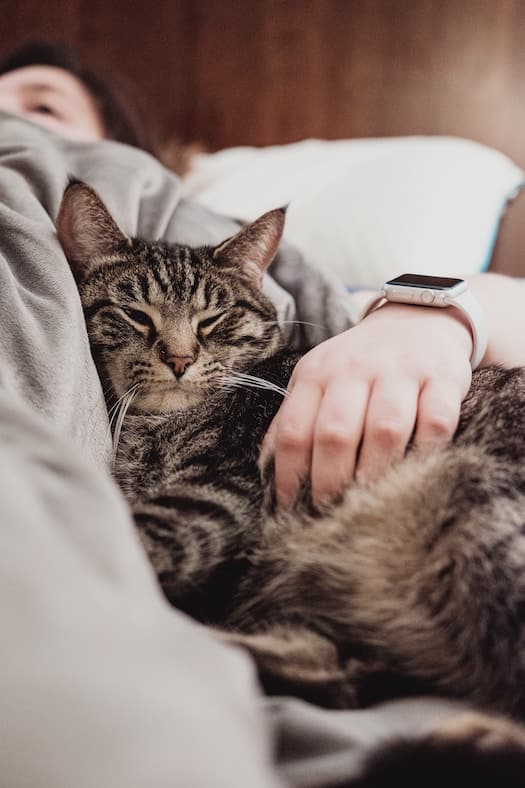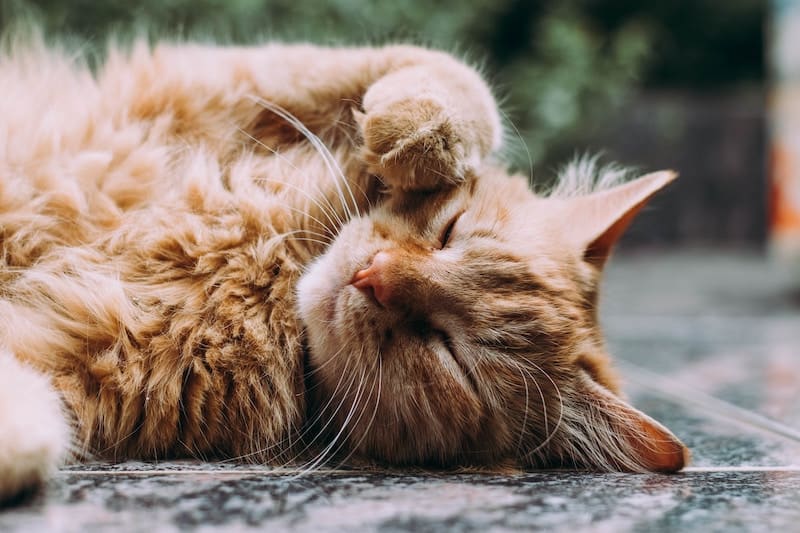Pets
Everything you need to know about hairballs

Photography, Manja Vitolic, Unsplash.com
Pets
Everything you need to know about hairballs
Our feline companions are known to hark up a hairball once in a while.
Besides the extra cleaning that it brings us, hairballs are usually not something to worry about. However, even these normal occurrences can sometimes lead to discomfort and can become harmful for your kitty.
Here’s everything you need to know about the topic!
Although we call this cluster a "ball" of hair, it's actually cylindrical in shape, like a cigar or sausage. It's a more or less tightly packed concretion of hairs, and its scientific name is the "trichobezoar".
How do they happen?
Trichobezoars form in the cat's digestive tract (stomach, intestines) as a result of grooming, when they swallow dead hairs from their coats. In addition, the action of stirring and the various biological liquids can amalgamate the hairs and form a ball in the stomach. The risk of hairball formation is greater in long-haired cats, especially during the moulting period. The cylindrical, elongated shape of the "ball" is explained by the fact that it passes through the cat's esophagus, which is particularly narrow and tubular in shape.
WHY ARE CATS PARTICULARLY AT RISK?
Cats can spend up to a third of their waking hours grooming themselves. A cat’s rough tongue, dotted with small horny papillae, is the main reason for the accumulation of hair in his or her stomach. During grooming sessions, the tongue easily snags loose hairs. The presence of felted hairs or knots in the fur, as well as parasites such as fleas or ticks, encourages the cat to clean himself or herself more often.
HOW SERIOUS IS IT FOR THEIR HEALTH?
Most of the time, this pile of hair is rejected after a series of vomiting episodes. This is the most common problem caused by hairballs. Sometimes, when the cat is unable to evacuate them, hairballs can cause other health problems: lack of appetite, gastritis, constipation, dry coughs, etc. Older cats generally have slower digestive transit. They are therefore more prone to episodes of constipation due to an accumulation of hair in the intestines. Rarely, hair can accumulate and cause an intestinal obstruction. In this case, surgery is required.
BEHAVIOUR AND SEASONS
Some cats, especially those with long hair, are more at risk of developing trichobezoars than other small felines. Cats who compulsively groom themselves out of anxiety or boredom are also at greater risk. Hairballs can also be more frequent at certain times of the year. In autumn and spring, when the number of hours of light per day increases or decreases, cats shed more.

Photography, Chris Abney, Unsplash.com
8 TIPS FOR PREVENTING THEM
Fresh catnip
Fresh catnip, green and fibrous, is sold in jars in pet stores. Although it's not essential, it promotes good intestinal transit and helps cats vomit hair, which purges them.
Daily brushing
By brushing your cat every day, you automatically remove the dead hairs it would otherwise swallow. What's more, there are ultra-efficient brushes for cats, so there's no excuse not to brush your cat!
A high-fibre diet
Fibre-rich diets have been shown to increase stool hair elimination by 80-100%. These specialized veterinary diets can also help manage weight, prevent overweight and promote your companion’s overall health.
Special treats
Medi-Treats cat treats contain the enzyme bromelain, which may help your feline "digest" hair. Although the enzyme's digestive virtues have not been scientifically proven, these daily treats could help solve the problem.
Feline laxative paste
The laxative paste contains petroleum jelly, a non-irritating intestinal lubricant that helps eliminate swallowed hair by stimulating its transit through the digestive system. Most cats enjoy licking this paste. Simply administer a portion about one inch long, two or three times a week. The frequency can be increased during periods of increased shedding, such as spring and autumn. Several laxative pastes are available in veterinary clinics.
They are often malt- or tuna-flavoured. You can also use petroleum jelly (Vaseline) for cats who don't like the taste of commercial paste.
CAUTION:
Administering vegetable oil or cod liver oil has no effect on your cat's hairballs and is therefore useless.
Administering mineral oil can cause aspiration pneumonia and is therefore absolutely not recommended.

Photography, Ludemeula Fernandes, Unsplash.com
Shearing
If this doesn't help, or if you find it impossible to brush your long-haired cat, you can take her to a professional groomer for brushing or clipping once or twice a year.
Parasite treatment
Some cats may lick themselves excessively because they have fleas or other skin parasites. Once again, your veterinarian will be able to treat your kitty optimally and safely.
Veterinary examination (in case of compulsive grooming)
If you suspect that hairballs are a result of compulsive grooming, consult your veterinarian to determine the issues or physical illnesses that may be causing this.














Comments